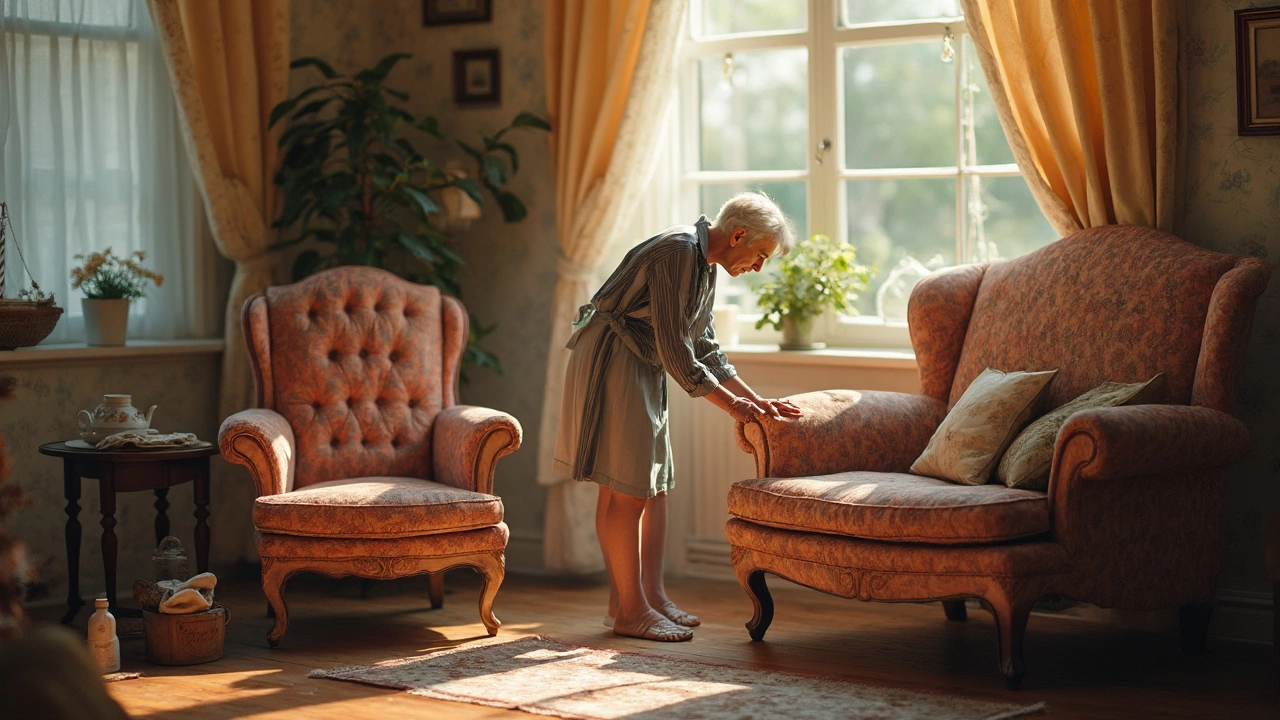Clean Old Upholstery – Simple Ways to Bring Back Freshness
Got a couch or armchair that’s seen better days? Old fabric can look dull, smell musty, or hold stubborn stains. You don’t have to toss it out – a good clean can make it look almost new again.
What You Need Before You Start
First, grab a few basics: a soft‑brush vacuum attachment, a bucket, mild dish soap, white vinegar, baking soda, a clean microfiber cloth, and a spray bottle. If the fabric is delicate, test any liquid on a hidden spot first. A couple of cheap disposable gloves can keep your hands clean, too.
Check the care tag under the cushion. Most upholstery lists a code – “W” means water‑based cleaners are safe, “S” stands for solvent only, and “WS” allows both. Knowing the code saves you from ruining the material.
Step‑by‑Step Cleaning Process
1. Vacuum the surface. Run the brush over the whole piece to pull out dust, crumbs, and pet hair. Go slow around seams and crevices.
2. De‑odor with baking soda. Sprinkle a thin layer over the fabric, let it sit 15‑20 minutes, then vacuum again. This lifts smells and loosens light stains.
3. Make a gentle cleaning solution. Mix two cups of warm water, a tablespoon of dish soap, and a splash of white vinegar. Put it in a spray bottle.
4. Spot‑test. Spray a little on the hidden area, wait a minute, and dab with a cloth. If the colour stays unchanged, you’re good to go.
5. Clean the upholstery. Lightly mist the fabric – don’t soak it. Use the microfiber cloth to blot, working from the outside of a stain toward the centre. Avoid rubbing; that can push dirt deeper.
6. Rinse lightly. Fill a spray bottle with plain water and mist the cleaned spots. Blot again with a dry cloth to remove soap residue.
7. Dry properly. Open windows or use a fan to circulate air. If possible, place the cushions in a sunny spot for a few hours. Never use a hair dryer on high heat – it can shrink the fabric.
If you prefer a commercial product, look for “eco‑friendly upholstery cleaner” that lists enzymes or plant‑based surfactants. These work well on old stains without harsh chemicals.
Some owners notice their couch looks worse after cleaning because too much water was used or the wrong cleaner was applied. That’s why the spot‑test and gentle misting matter – they keep fabric from becoming water‑logged or discoloured.
For tough set‑in stains like wine or grease, make a paste of baking soda and a few drops of dish soap. Apply, let dry, then vacuum. The abrasive action lifts the stain without scrubbing the cloth.
When you’re done, give the whole piece a final vacuum to pick up any leftover particles. A quick brush‑up keeps the upholstery looking fresh between deep cleans.
Regular maintenance saves time. A light vacuum once a week and a quick baking‑soda freshen‑up every month can extend the life of any old sofa.
So, next time you stare at an ageing couch, remember you have a simple plan to clean old upholstery without spending a fortune or calling a pro. A little effort, the right tools, and a bit of patience can bring back that inviting look and feel.

Best Way to Clean Old Upholstery: Straightforward Steps for Great Results
Wondering how to clean old upholstery without damaging it? This guide cuts through the noise and tells you exactly what you need to know. Get tips on stain removal, patching up smelly areas, and the products you should keep handy. Learn how to treat delicate fabrics so your favorite furniture feels fresh again. Skip the guesswork and get straight to the good stuff.
Read More